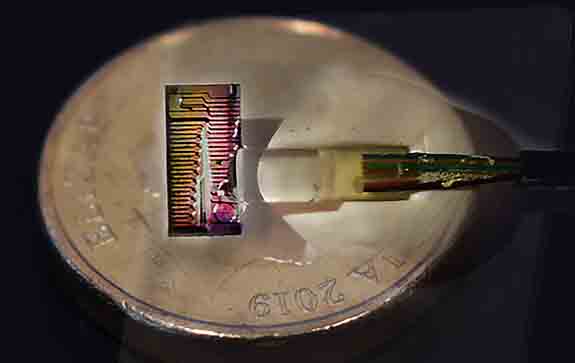
A team of researchers from Monash, Swinburne and RMIT universities have recorded the world’s fastest internet speed from a single optical chip, achieving data speed of 44.2 terabits per second from a single light source using existing communications infrastructure.
The research team, led by Dr Bill Corcoran (Monash), Professor Arnan Mitchell (RMIT) and Professor David Moss (Swinburne), used what is known as a micro-comb chip which is smaller and lighter than existing telecommunications hardware and produces an infrared rainbow of light, the equivalent of 80 lasers.
Professor Moss, Director of the Optical Sciences Centre at Swinburne, co-invented the micro-comb chip which was contributed by Swinburne.
According to the official press release, the new technology has the capacity to support the high-speed internet connections of 1.8 million households in Melbourne, at the same time, as well as billions across the world during peak periods.
“We’re currently getting a sneak-peak of how the infrastructure for the internet will hold up in two to three years’ time, due to the unprecedented number of people using the internet for remote work, socialising and streaming. It’s really showing us that we need to be able to scale the capacity of our internet connections,” said Dr Bill Corcoran from Monash University.
“What our research demonstrates is the ability for fibres that we already have in the ground, thanks to the NBN project, to be the backbone of communications networks now and in the future. We’ve developed something that is scalable to meet future needs.”
According to Dr Corcoran, the data can also be used for self-driving cars and future transportation and it can also have a great impact on the medicine, education, finance and e-commerce industries.
“Long-term, we hope to create integrated photonic chips that could enable this sort of data rate to be achieved across existing optical fibre links with minimal cost. Initially, these would be attractive for ultra-high speed communications between data centres. However, we could imagine this technology becoming sufficiently low cost and compact that it could be deployed for commercial use by the general public in cities across the world,” added Professor Mitchell.
“It is truly exciting to see their capability in ultra-high bandwidth fibre optic telecommunications coming to fruition. This work represents a world-record for bandwidth down a single optical fibre from a single chip source, and represents an enormous breakthrough for part of the network which does the heaviest lifting. Micro-combs offer enormous promise for us to meet the world’s insatiable demand for bandwidth,” said Professor Moss.
Their findings were published in the prestigious journal Nature Communications.




















